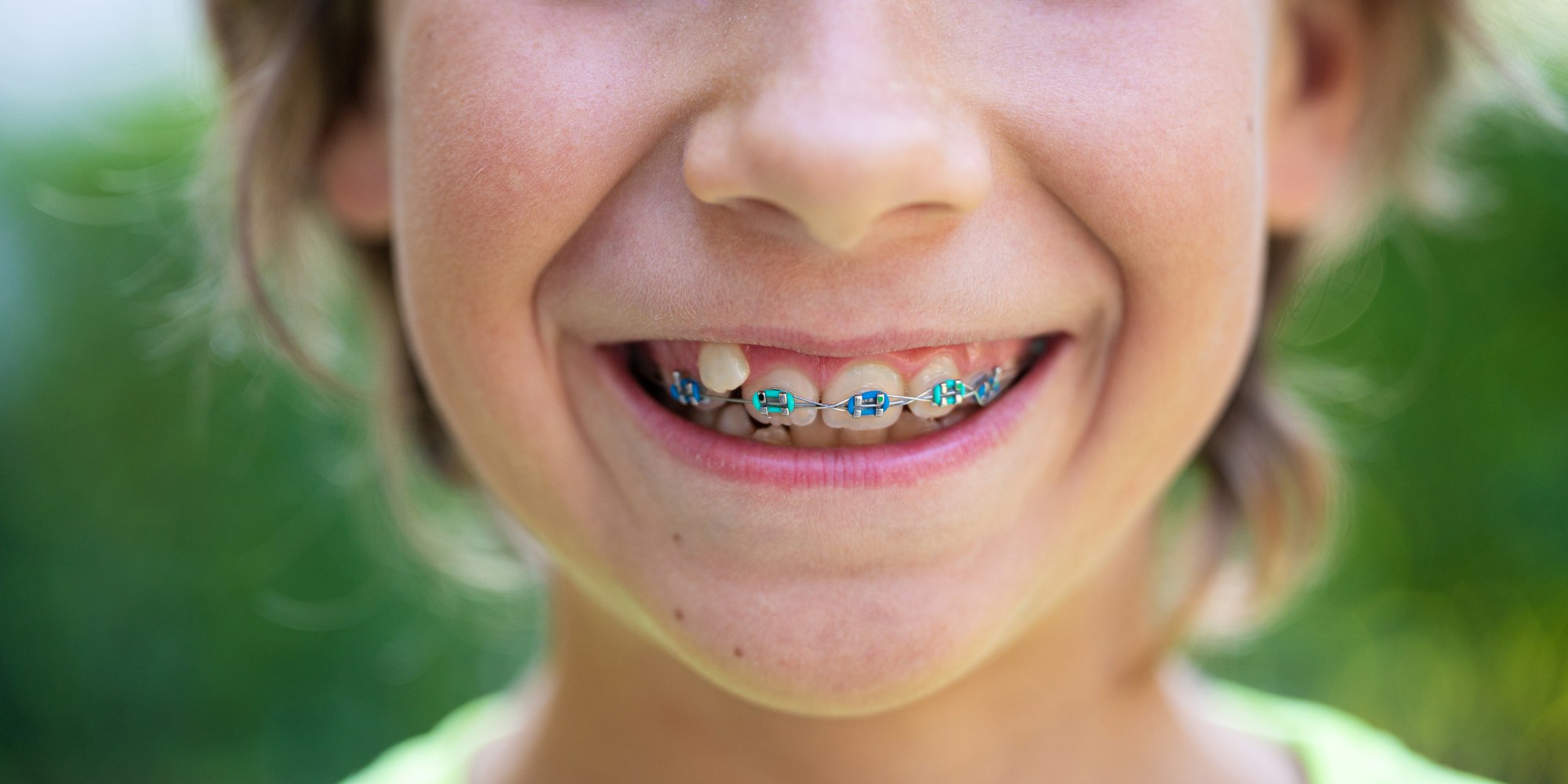Metal Braces
Traditional metal braces do have some advantages in affordability and comfort.

Table of Contents
Conventional metal braces are a tried-and-true method for straightening teeth and bite correction. And, metal braces are more affordable and comfortable than ever before.
For children, traditional braces provide fun customizations that are just not possible with clear, removable aligners, such as clear ceramic braces and Invisalign. A number of our patients choose metal braces as another way to express their personality by selecting colored bands! This is a fun feature for younger patients and teenagers — school spirit colors, maybe?
To find out more about getting traditional metal braces in Rhode Island, schedule an appointment at Ocean State Orthodontics with Dr. Barry Rosenberg.
Why Choose Traditional Metal Braces?
With advances in orthodontics, such as Invisalign and clear braces, you might be wondering, “What is the benefit of traditional metal braces, and why would I choose them?” Truth be told, there are many advantages! Some benefits of braces include:
- Metal braces are strong and durable, and not likely to break or damage
- Metal braces are typically more affordable than other orthodontic treatment alternatives
- Metal braces can help kids and adults express themselves with colorful bands
- Metal braces tend to work quickly and effectively in treatment
Who Can Get Metal Braces?
Classic metal braces can be a great option for both children and adults. The braces are crafted from top-grade stainless steel archwires and we position the mounts perfectly to give you confidence in your smile. Ideal candidates for traditional braces are typically teens or adults with one or more of the following dental concerns:
- A misaligned jaw or bite
- Crowded teeth
- A noticeable gap in teeth
- Over-bite or under-bite
- Teeth that stick out or protrude
How Do You Apply Braces to My Teeth?
After your initial consultation at Ocean State Orthodontics, a personalized treatment plan will be created for you by Dr. Rosenberg. When you return to receive your braces, your teeth will be thoroughly cleaned and prepped before metal brackets are applied. After we have brushed the bonding agent on your teeth, your metal braces will be attached. Once all the mounts are done, the wire gets threaded through them easily, and you can select your preferred band color(s), which we’ll apply to keep the wires connected to the braces. This process is usually quite fast, and patients feel little to no discomfort. Once your braces have been applied, you can expect to revisit our office about once a month to receive adjustments and progress checks.
Metal Braces FAQs
The duration of wearing braces varies based on individual needs, typically ranging from 18 months to 3 years. Factors influencing the treatment time include the severity of the dental issues, the type of braces used, and how well the patient follows the orthodontist’s instructions. Regular adjustments and good oral hygiene practices help ensure the treatment progresses as planned. Your orthodontist will provide a more precise estimate based on your specific case during your initial consultation.
If a wire or bracket breaks, you must contact your orthodontist to schedule a repair appointment as soon as possible. In the meantime, you can use orthodontic wax to cover sharp edges to prevent them from irritating your mouth. If a wire is poking and causing discomfort, you can carefully use a clean pair of tweezers or a pencil eraser to push it back into place gently. Avoid eating hard or sticky foods that might further damage your braces, and maintain good oral hygiene to prevent complications.
Braces may cause some discomfort, mainly after they are first applied and after each adjustment. This discomfort is typically described as pressure or soreness in the teeth and gums, which usually subsides within a few days. Over-the-counter pain relievers and a soft-food diet can help manage the initial discomfort. Most patients quickly adapt to wearing braces and experience minimal ongoing pain. Regular communication with your orthodontist can help address concerns and ensure a more comfortable treatment experience.
